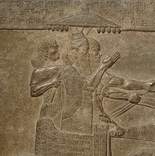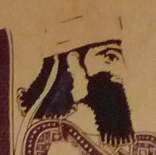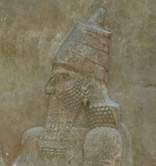Home » Essentials » Kings
Kings
Tiglath-pileser III, king of Assyria (744-727 BC). Seen today as the founder of the Neo-Assyrian empire, his conquests brought regions from the Mediterranean Sea to Western Iran under direct Assyrian rule. |
|
Shalmaneser V, king of Assyria (726-722 BC). The chosen heir of his father Tiglath-pileser III, his reign lasted less than five years. |
|
Sargon II, king of Assyria (721-705 BC). Ascending to the throne in the midst of a countrywide rebellion, he built a lavish new residence city, Dur-Šarruken, and died on the battlefield just one year after its completion. |
Content last modified: 11 Sep 2024.


